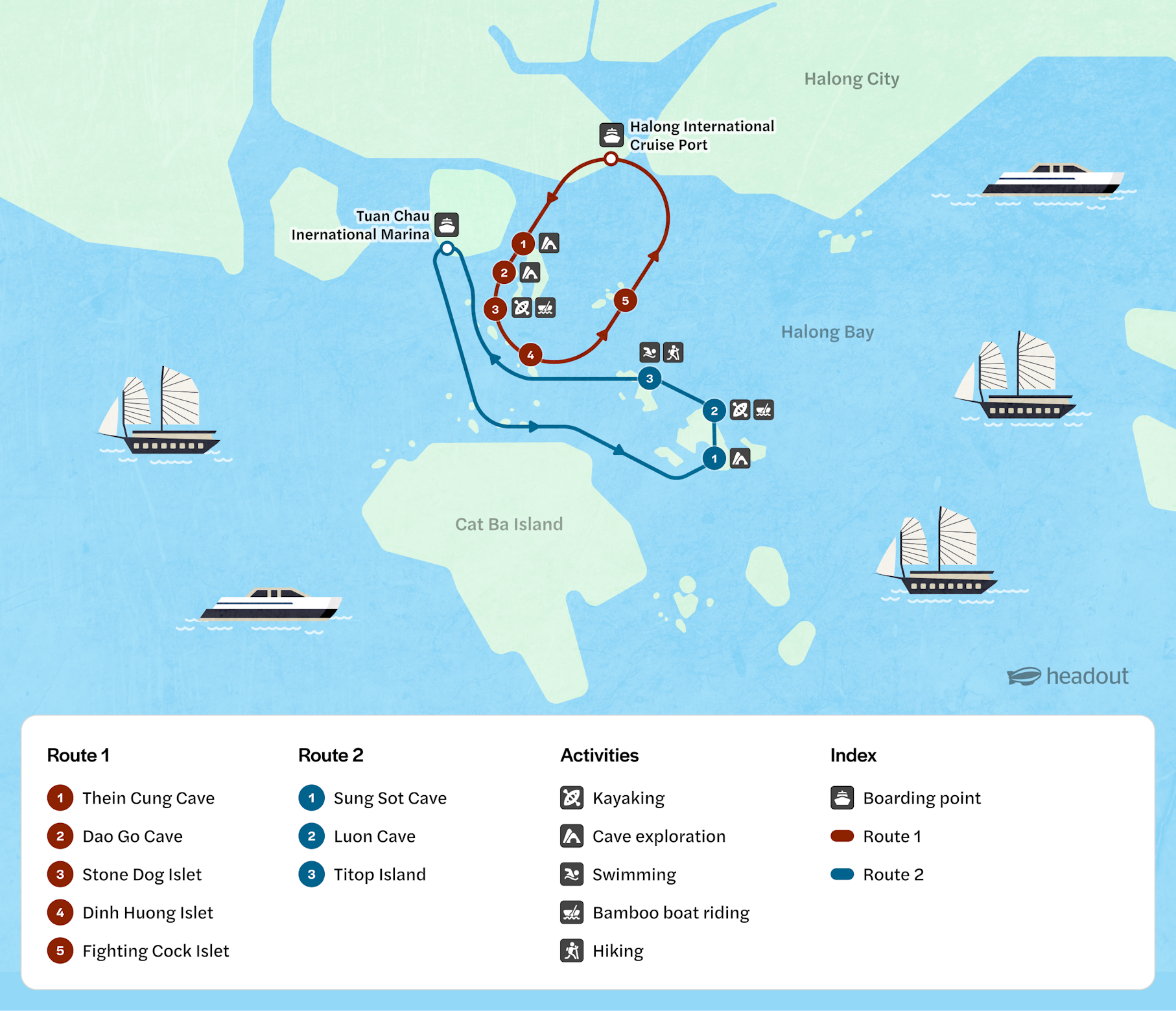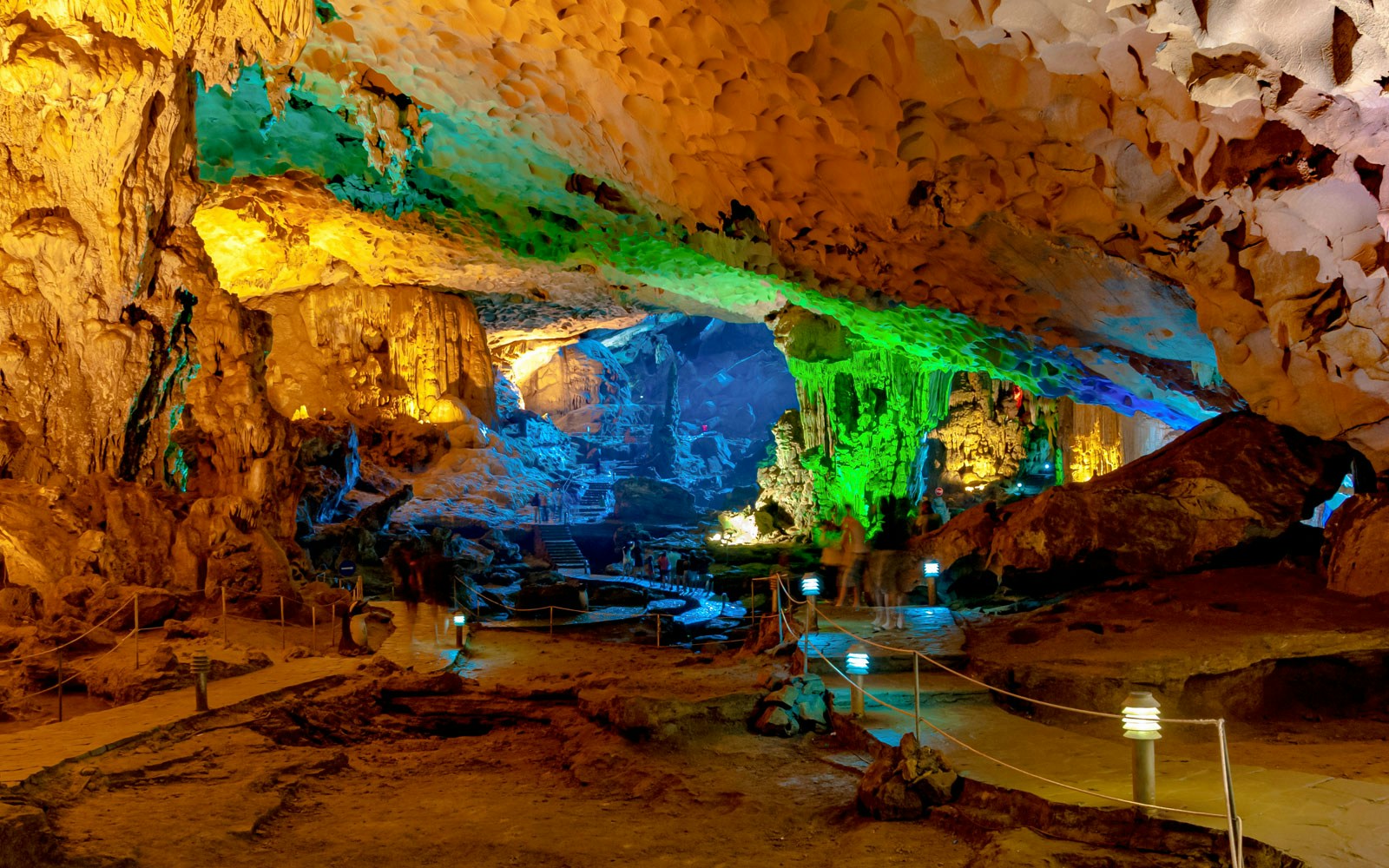- Sites covered: Thien Cung Cave, Dau Go Cave, Stone Dog Islet, Dinh Huong Islet (Incense Burner Islet) & Fighting Cock Islet
- Activities: Cave exploration & kayaking/bamboo boat ride

Route 1

Route 2
- Sites covered: Sung Sot Cave, Luon Cave & Titop Island
- Activities: Cave exploration, kayaking/bamboo boat ride (additional cost on the 3-star cruise), hiking & swimming









